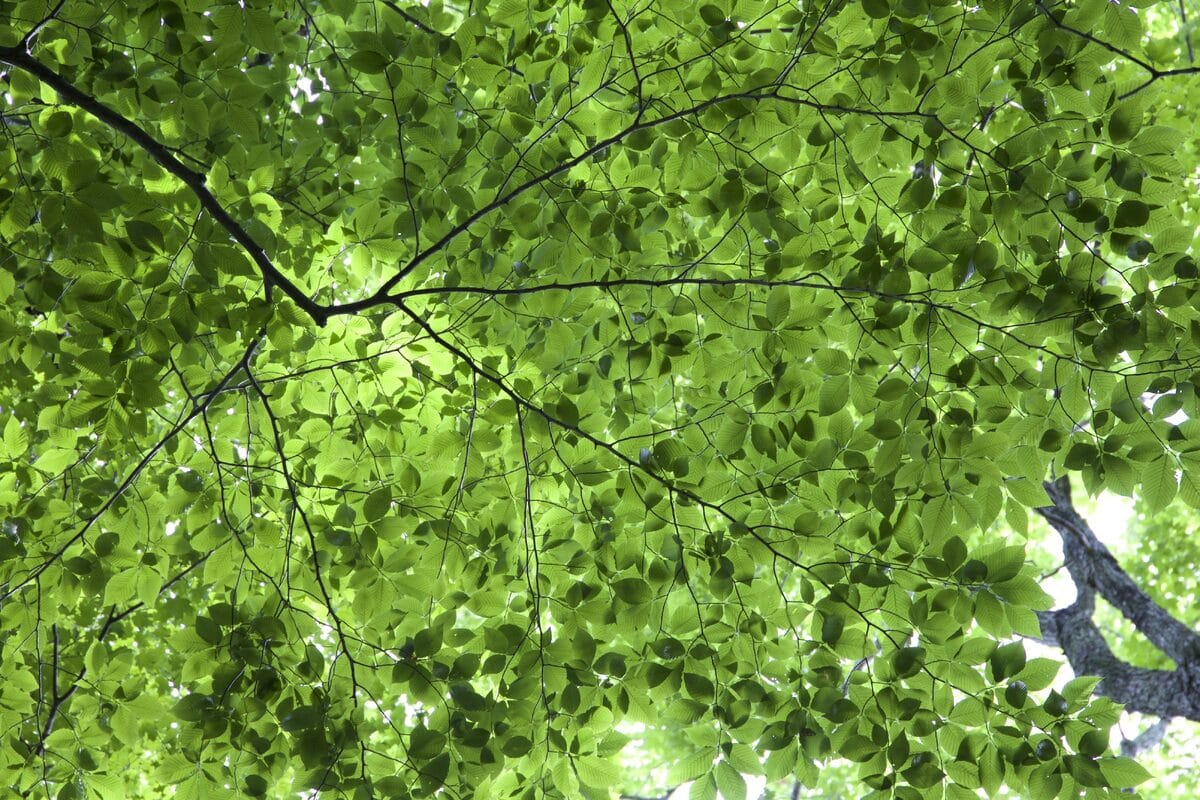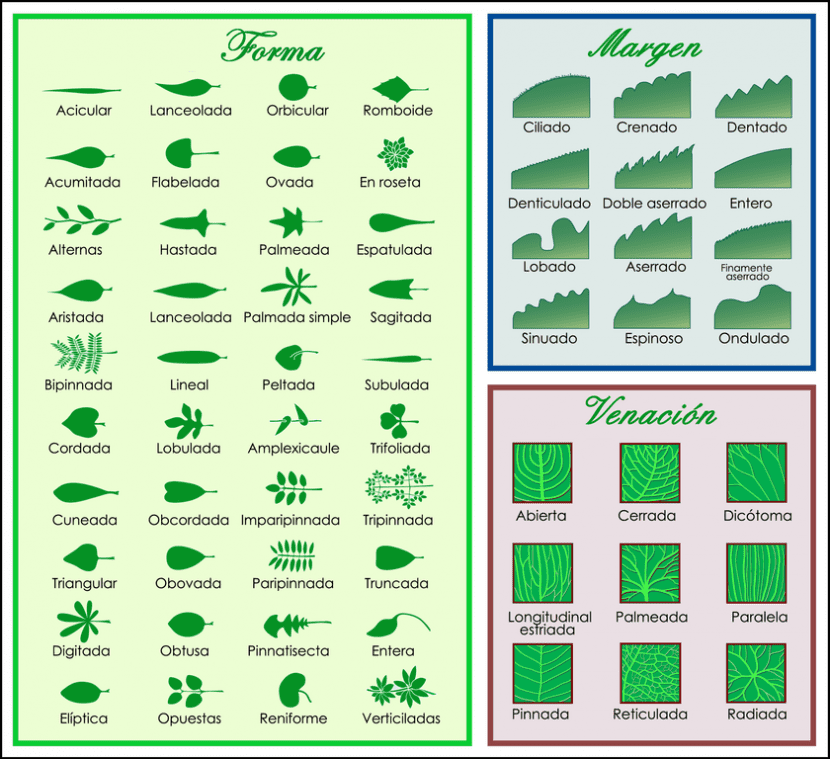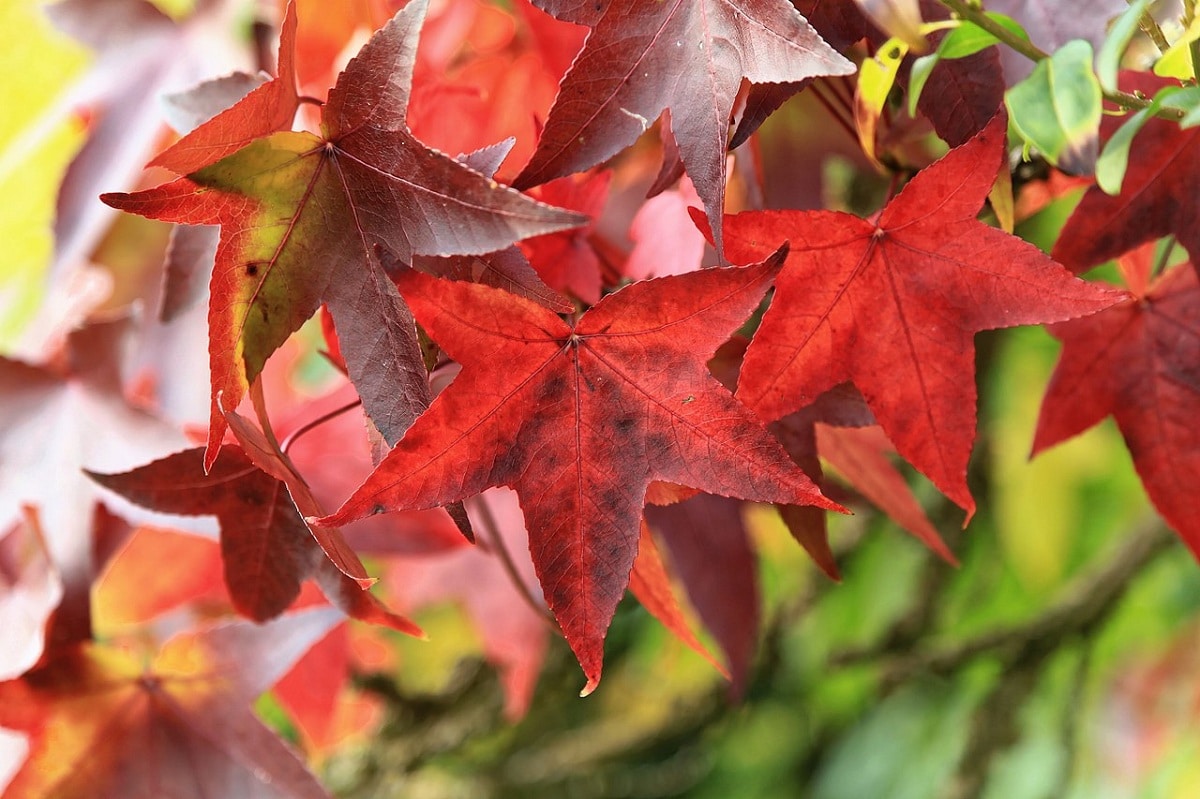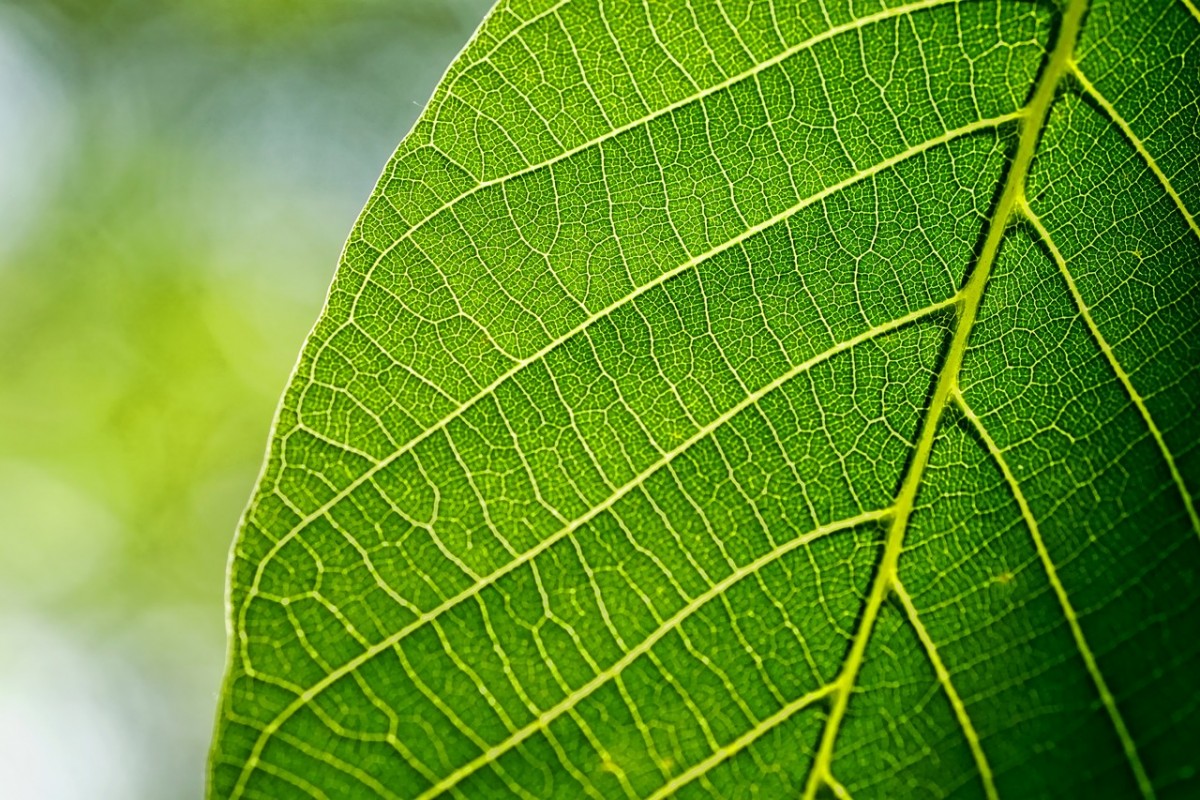
Trees are distinguished, not only by their size or by the colors and / or cracks of the bark of their trunk, but also and above all by their leaves. These are one of the most important parts of the plant, because thanks to them they can breathe, carry out photosynthesis and, therefore, grow. At the same time they provide us with something that is vital to us: oxygen.
We do not stop to think about it because we take it for granted that we will always have that gas that is essential for life, but the reality is that as the population increases, so does the demand for wood. Thus, humans are destroying all the forests in the world. But, although this could be talked about at length, in this article we will focus on the different types of tree leaves and in other curiosities of these incredible plants.
Variety of tree leaf shapes

In this image you can see the number of forms that the leaves can take. There are quite a few, right? This is because each tree has its own adaptation mechanism. This means that each species has its own strategy to be able, not only to survive, but also to adapt to the conditions of its place of origin; conditions that are changing little by little - we are talking about thousands and even millions of years - and gradually.
And is that plants, and especially trees, have to face a large number of enemies since they are seeds. Fungi, insects, viruses, bacteria, herbivorous animals… and water. Yes, water can also affect them, since if it is kept on the leaf for a long time, it becomes dry, since it has clogged pores. It is through those pores where they breathe, but of course, if the leaves do not drain the water well, they can have a really bad time.
When we see a tree, the first thing we look at is its size, but as we get closer, we focus on the details: bark of the trunk, arrangement of the branches, flowers if it currently has them, and on the sheets. Depending on its morphology, we can know what species or genus it could be.
How to differentiate the types of tree leaves

In order to know the different types of leaves that exist, we must know how to differentiate between the parts of the leaves that almost all of them have in common. Each tree has its own fingerprint so to speak and is represented by its leaves. All of them have a unique characteristic and, therefore, it is necessary to know the parts that make up the leaves of the trees in order to understand their entire classification.
Let's see what the different parts of the tree leaves are:
- Petiole: refers to the base that unites the branch with the stem of the plant or base of the foliar. It is a thinner and more cylindrical structure that can be tiny. In some cases some plants do not have the petiole on their leaves.
- Stipulations: they are parts of the plant that form on each side of the foliar base. They are generated in all plants that have a sap transport system known as a vascular plant. Stipules can vary in shape and size. There is usually one on each leaf and the main function is to protect the leaf primordium. When hopefully it has already grown, it tends to disappear.
- Limbo: It is also known by the name of sheet and is the flat part of the sheet. The upper face is called the bundle and is normally of a darker color and the lower face is the underside that becomes lighter in color. There are several classifications depending on the blade and the edge they have: smooth or whole, lobed, serrated, split, split or serrated. More information.
- Apex: the apex of the leaf is the upper end. It is the opposite of the base. It is not always well defined since it depends on the shape of the leaf and the species of tree.
- Rib: are all the nerves found in the leaf. It is through this vascular network that the sap circulates and communicates with the rest of the plant.
- Axillary bud: it is the cohesion point that exists between the leaf and the stem. It specializes in creating shoots that can reproduce or remain dormant. It is one of the most important aspects for the reproduction of plants.
Classification of tree leaves

We are going to see what are the different aspects by which tree leaves are classified. The first thing of all is to know that the shapes of the leaves are determined by the environment in which they are found. This is because in the long adaptation process, each leaf shape can allow one degree of development or another. Let's see what are the main classifications of the shapes of tree leaves:
Classification of tree leaves by shape
- Simple: are those in which a single blade is born in each petiole. That is, a leaf is born on each petiole.
- Composite: are those in which several articulated leaves called leaflets are formed from the petiole.
Classification of tree leaves by rib
- uninervias: are those that have a single central nerve. The most common are found in trees such as pines. Pine leaves are very thin called acicular and is the result of the adaptation process of conifers to prolonged periods of drought.
- plurinerves: Unlike the previous one, it has a branching of the nerves. These plants have adapted to conditions with higher amounts of humidity and, therefore, they distribute the sap better.
As you can see, there are different shapes of tree leaves according to each species. I hope that with this information you can learn more about the shapes of tree leaves.